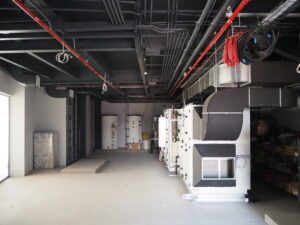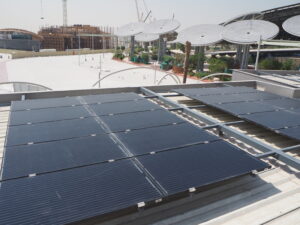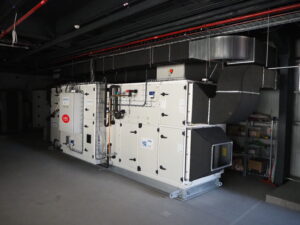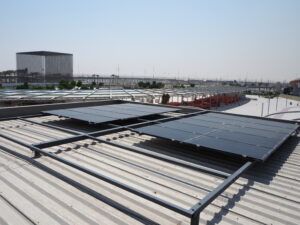A team of experts from the University Centre for Energy Efficient Buildings CTU in Prague in the second half of September, after a longer pause, renewed the work on the installation of the S.A.W.E.R. device in the Czech national pavilion at the EXPO 2020 world exhibition in Dubai, whose start was postponed to October 2021 because of anti-pandemic measures.
Apart from the complicated placement of the three-ton main sorption unit, two containers of material for the realisation of the whole S.A.W.E.R. system, which will supply water obtained from surrounding air to the garden irrigation system, were unloaded. Photovoltaic system was gradually installed on the roof of the Czech national exposition building, and battery storage with sorption unit in technology room. The sorption unit was tested in operation powered both from the battery storage and from the diesel generator, which at present is the main source of electric energy for the construction.
“Water flows, but it is a provisional test – we couldn’t yet neither connect the solar panels to the system, nor start the water production in full scale.” says Tomáš Matuška, leader of the CTU UCEEB team, “now we will just make everything safe, because the room is not dustproof, and we will have to return to Dubai in the end of the year.”
There are many problems in the installation from the start, from unsatisfactory readiness of access routes to the technology room through the absence of planning from the company making the construction, to extreme emphasis on work safety at EXPO, which in daily temperatures around 40 °C and hygienic measures connected to the COVID pandemic makes it impossible to effectively and quickly do the planned activities. Even with these obstacles, the main part of the system for obtaining water from air was put into operation and in the test during the visit of the General Commissioner of the Czech participation to EXPO 2020 Jiří F. Potužník, it produced first dozens of litres of water.




